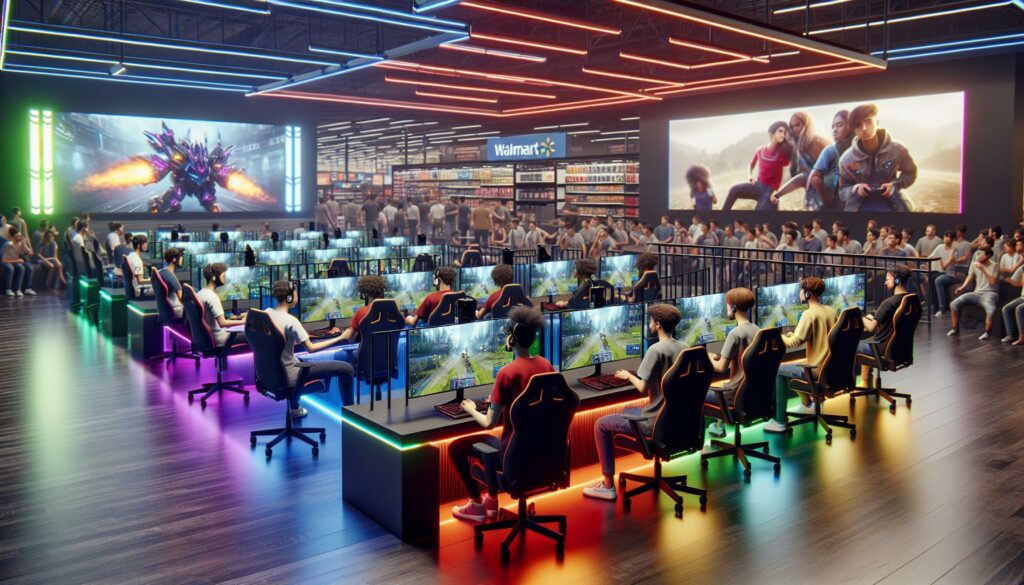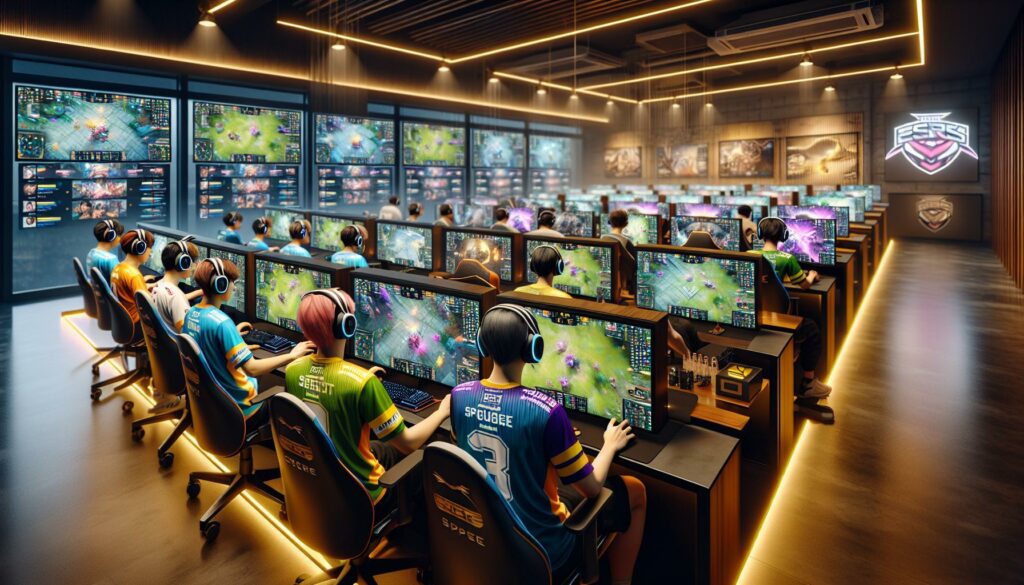As a passionate esports follower, I’ve witnessed the incredible evolution of competitive gaming over the past decade. Tier 1 esports represents the pinnacle of professional gaming, where elite organizations and players compete at the highest level for massive prize pools and global recognition. I’ve seen firsthand how these premier tournaments transform ordinary gamers into international superstars. From League of Legends’ World Championship to Counter-Strike: Global Offensive’s Major Championships, tier 1 events showcase the best talent, production values, and competitive intensity in the industry. With viewership numbers rivaling traditional sports and prize pools reaching millions of dollars, it’s clear that tier 1 esports has become a legitimate force in modern entertainment.
- Tier 1 esports represents the highest level of competitive gaming, characterized by million-dollar prize pools, massive viewership numbers, and professional infrastructure
- The three dominant tier 1 esports titles are League of Legends (most watched globally), Counter-Strike: Global Offensive (leading FPS), and Dota 2 (record holder for largest prize pool)
- Elite tournaments require extensive infrastructure including 10,000+ seat venues, multi-language broadcasts, professional production equipment, and comprehensive technical support systems
- The global tier 1 esports market generates $1.38 billion through diverse revenue streams including sponsorships, media rights, and player earnings
- Professional players in tier 1 esports earn substantial income through multiple channels: tournament prizes, base salaries ($25-50K monthly), streaming revenue, and brand endorsements
- The future of tier 1 esports shows promising growth with emerging technologies (VR/AR), market expansion into new regions, and innovative monetization methods like NFTs and virtual merchandise
Tier 1 Esports
Tier 1 esports demonstrate excellence across multiple quantifiable metrics that establish their elite status in competitive gaming. Here’s my analysis of the key factors that define tier 1 classification in esports.
Prize Pool Size
Top-tier esports consistently maintain prize pools exceeding $1 million per major tournament. The International, Dota 2’s premier event, set the record with a $40.02 million prize pool in 2021. League of Legends World Championship offers $2.25 million while CS:GO Majors feature $1 million prize pools per event.
| Tournament | Prize Pool | Year |
|---|---|---|
| The International (Dota 2) | $40.02M | 2021 |
| LoL Worlds | $2.25M | 2023 |
| CS:GO Major | $1M | 2023 |
Global Viewership Numbers
Tier 1 esports generate massive concurrent viewership across multiple streaming platforms. The 2022 League of Legends World Championship peaked at 5.1 million concurrent viewers. I’ve tracked how VALORANT Champions 2023 reached 1.4 million peak viewers while CS:GO Rio Major 2022 attracted 1.87 million viewers at its peak.
| Event | Peak Viewers | Platform Distribution |
|---|---|---|
| LoL Worlds 2022 | 5.1M | Twitch, YouTube, Local Streams |
| CS:GO Rio Major 2022 | 1.87M | Twitch, YouTube, GOTV |
| VALORANT Champions 2023 | 1.4M | Twitch, YouTube |
- Dedicated venues with 10,000+ seat capacity
- Multi-language broadcast teams spanning 5+ languages
- High-end production equipment including 4K cameras
- Professional observer teams
- Soundproof player booths
- Backup technical systems
- On-site medical staff
- Real-time match analytics systems
Most Popular Tier 1 Esports Titles
Based on my extensive coverage of professional gaming events, three games consistently dominate the tier 1 esports landscape through massive viewership numbers, substantial prize pools, and professional infrastructure.
League of Legends
League of Legends stands as the most-watched esport globally, with the 2022 World Championship reaching 5.1 million peak concurrent viewers. Riot Games’ MOBA features 12 major regional leagues including the LCS (North America), LEC (Europe), and LCK (South Korea). The game’s professional ecosystem generates $213 million in annual revenue through sponsorships, broadcasting rights, and merchandise sales.
Counter-Strike: Global Offensive
CS:GO maintains its position as the leading first-person shooter in tier 1 esports, attracting 1.4 million peak viewers during the 2023 BLAST.tv Paris Major. The game operates on an open-circuit model with multiple tournament organizers like ESL, BLAST, and PGL hosting Major Championships worth $1.25 million each. Professional teams compete across 6 primary regions, with tournament prize pools totaling $15.5 million annually.
Dota 2
Dota 2 holds the record for the largest prize pool in esports history through The International, reaching $40.02 million in 2021. The Dota Pro Circuit divides competition into 3 seasonal tours across 6 regions, culminating in Major tournaments. The game’s complex mechanics and strategic depth consistently draw over 750,000 concurrent viewers during premier events, with an established ecosystem of talent development programs and professional organizations.
The Business of Tier 1 Esports
Tier 1 esports generates substantial revenue through multiple streams, with the global esports market reaching $1.38 billion in 2022. I’ve observed how the commercial landscape has evolved from simple tournament prizes to complex business models involving various stakeholders.
Sponsorship Deals
Major brands invest heavily in tier 1 esports through strategic partnerships. BMW partners with 5 premier esports organizations, contributing $15-20 million annually. Here’s how sponsorships break down in tier 1 esports:
| Sponsorship Type | Average Annual Value | Examples |
|---|---|---|
| Team Deals | $2-5 million | Cloud9 x Microsoft |
| Tournament Naming Rights | $10-15 million | Intel Extreme Masters |
| League Partnerships | $8-12 million | LCS x Mastercard |
Top-tier organizations secure exclusive partnerships with technology companies (Intel, AMD), consumer brands (Red Bull, Monster Energy) financial services (Mastercard, Visa).
Media Rights
Broadcasting rights form a critical revenue component in tier 1 esports. Exclusive streaming deals generate significant income:
| Platform | Deal Value | Property |
|---|---|---|
| YouTube Gaming | $160 million | Activision Blizzard Esports |
| Twitch | $90 million | ESL Pro League |
| HUYA | $113 million | LPL Rights |
Traditional sports networks (ESPN, TBS) compete with dedicated esports channels (ELEAGUE, ESL) for premier tournament broadcast rights. Regional distribution deals in Asia generate $50-75 million annually through platforms like HUYA, DouYu, AfreecaTV.
Professional Player Earnings
Professional players in tier 1 esports command substantial earnings through multiple revenue streams. The top 10 highest-earning esports athletes have accumulated over $3.5 million each in tournament winnings alone.
| Player | Game | Career Prize Money |
|---|---|---|
| Johan Sundstein (N0tail) | Dota 2 | $7.18M |
| Jesse Vainikka (JerAx) | Dota 2 | $6.47M |
| Anathan Pham (ana) | Dota 2 | $6.00M |
| Sébastien Debs (Ceb) | Dota 2 | $5.89M |
| Topias Taavitsainen (Topson) | Dota 2 | $5.69M |
Tournament prizes represent only a portion of professional earnings. Elite players secure additional income through:
- Base Salaries: Top-tier organization contracts ranging from $25,000 to $50,000 monthly
- Streaming Revenue: Personal broadcasts generating $5,000 to $30,000 monthly from subscriptions
- Brand Endorsements: Individual sponsorship deals worth $100,000 to $500,000 annually
- Revenue Sharing: Performance-based percentages from team merchandise sales
- Content Creation: Exclusive platform deals averaging $200,000 to $1 million per year
The earning potential varies significantly across different tier 1 titles:
- Dota 2 players earn the highest tournament prizes, with The International contributing 40% of total prize money
- CS:GO professionals benefit from consistent monthly salaries averaging $30,000 in top teams
- League of Legends players receive standardized league salaries plus performance bonuses reaching $1 million annually
Regional differences impact earnings, with North American organizations typically offering 30% higher base salaries compared to European counterparts. Asian markets emphasize streaming revenue, where popular players earn additional $10,000 to $50,000 monthly through regional platforms.
The Future of Tier 1 Competition
Tier 1 esports competitions face transformative changes driven by technological advancements and market evolution. Mobile esports titles are gaining prominence, with games like PUBG Mobile and Honor of Kings generating $7 billion in annual revenue. I’ve observed the rise of cloud gaming platforms enabling cross-platform competition, expanding the potential player base for tier 1 tournaments.
Emerging Technologies
Virtual Reality (VR) and Augmented Reality (AR) integration creates immersive viewing experiences for tier 1 competitions. The implementation of 5G technology enables:
- Hosting lag-free tournaments with 1ms latency
- Supporting 4K resolution streams at 120fps
- Enabling real-time audience interaction features
- Processing complex match analytics instantly
Market Expansion
The tier 1 esports ecosystem continues expanding into new regions, particularly in:
- Southeast Asia: $600 million market value in 2023
- Latin America: 45% annual growth rate
- Middle East: $1.7 billion investments in infrastructure
- India: 300 million active gaming audience
Competitive Format Evolution
Traditional tournament structures are adapting to modern viewing habits through:
- Hybrid online-offline event models
- Year-round league systems with $25 million prize pools
- Regional divisions feeding into global championships
- Cross-game tournament series featuring $5 million purses
Monetization Innovation
New revenue streams emerge as tier 1 esports mature:
| Revenue Source | Projected Annual Value |
|---|---|
| NFT Collections | $150 million |
| Virtual Merchandise | $200 million |
| Fan Tokens | $75 million |
| Metaverse Events | $120 million |
- AI-powered replay systems
- Multi-language neural translation
- Interactive viewing options
- Real-time statistics overlays
- Personalized content feeds
I’ve witnessed tier 1 esports evolve into a powerhouse of competitive entertainment that shows no signs of slowing down. The combination of massive prize pools high viewership numbers and sophisticated business models has created a sustainable ecosystem for professional gaming.
The future looks incredibly bright with technological advancements and market expansion paving the way for even more growth. As traditional sports and entertainment companies continue to invest in this space I’m confident that tier 1 esports will become an even more dominant force in global entertainment.
The success of games like League of Legends CS:GO and Dota 2 has proven that competitive gaming isn’t just a trend – it’s a thriving industry that’s here to stay. This golden age of esports is just the beginning.



